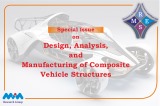Research Article
Mix ratio design assessment of interlocking paving stone using both destructive and non-destructive methods
Atoyebi O. D.1,2, Odeyemi S. O.3, Chiadighikaobi P. C.4, Gana A. J.1,2, Onyia S. C.2
1Landmark University SDG 11 (Sustainable Cities and Communities Research Group)
2Department of Civil Engineering, Landmark University, Omuaran, Kwara State
3Department of Civil Engineering, Kwara State University, Malete, Kwara State
4Department of Civil Engineering, Afe Babalola University, Ado-Ekiti, Ekiti State, Nigeria
Keywords
Abstract
Interlocking Paving Stone;
Mix Ratio;
Strength;
Rebound Hammer
Interlocking paving stones have been produced in most developing countries with no specific method for testing the strength before use. This study presented the mix ratio design assessment of interlocking paving stone strength properties using both destructive and non-destructive methods. Six mix ratios were used to produce the interlocks and tests such as skid resistance, flexural strength, compressive strength and rebound hammer were conducted on 7, 14, 28, 56 and 90 days. All the skid resistance tests had British Pendulum Number (BPN) values greater than 75 specified in Table NA.2 of BS 1338:2003, the interlocking paving stone potential for skid is extremely low. The flexural strength was conducted following IS 15658:2006 and the result ranges from 1.34 – 5.38 N/mm2. The compressive strength result for the mix ratios ranges from 6.20 – 21.78 N/mm2 and mix ratio 1:3 had the highest compressive strength of 19.34, 21.78 N/mm2 at 56 and 90 days respectively. Table 1 of IS 15658:2006 is used to classify the paving stone for use in non-traffic areas based on the compressive strength results. A correlation model was developed combining all the mix ratio average rebound values and compressive strength, the regression equation was produced and an accuracy test was performed to check the regression formula estimates. This study validates the use of a rebound hammer as a non-destructive method on interlocks to predict the compressive strength with 79 % accuracy. Mix ratio 1:3, 1:2 is recommended for use in producing interlocks based on higher compressive and flexural strength.
© 2022 MIM Research Group. All rights reserved.


